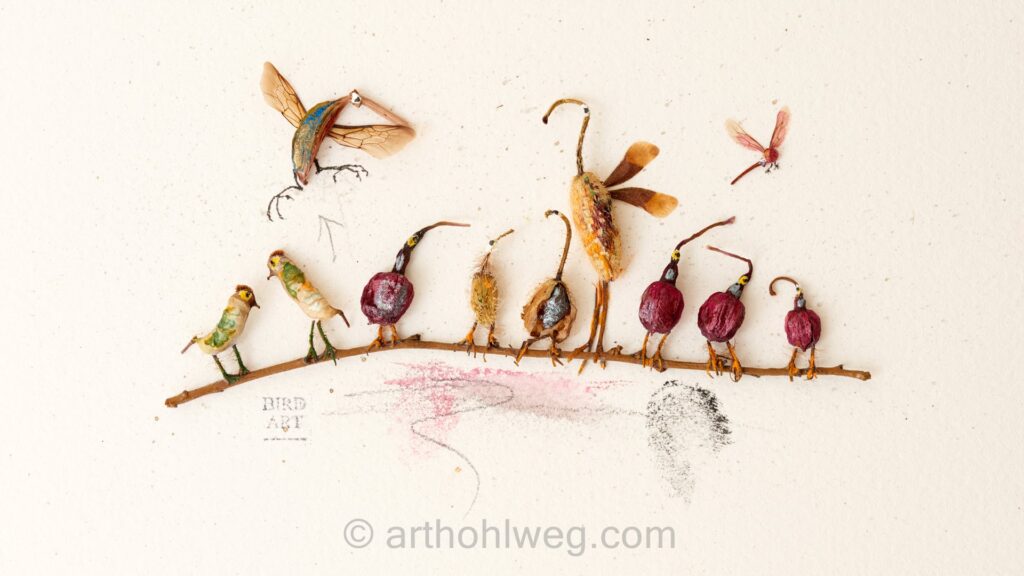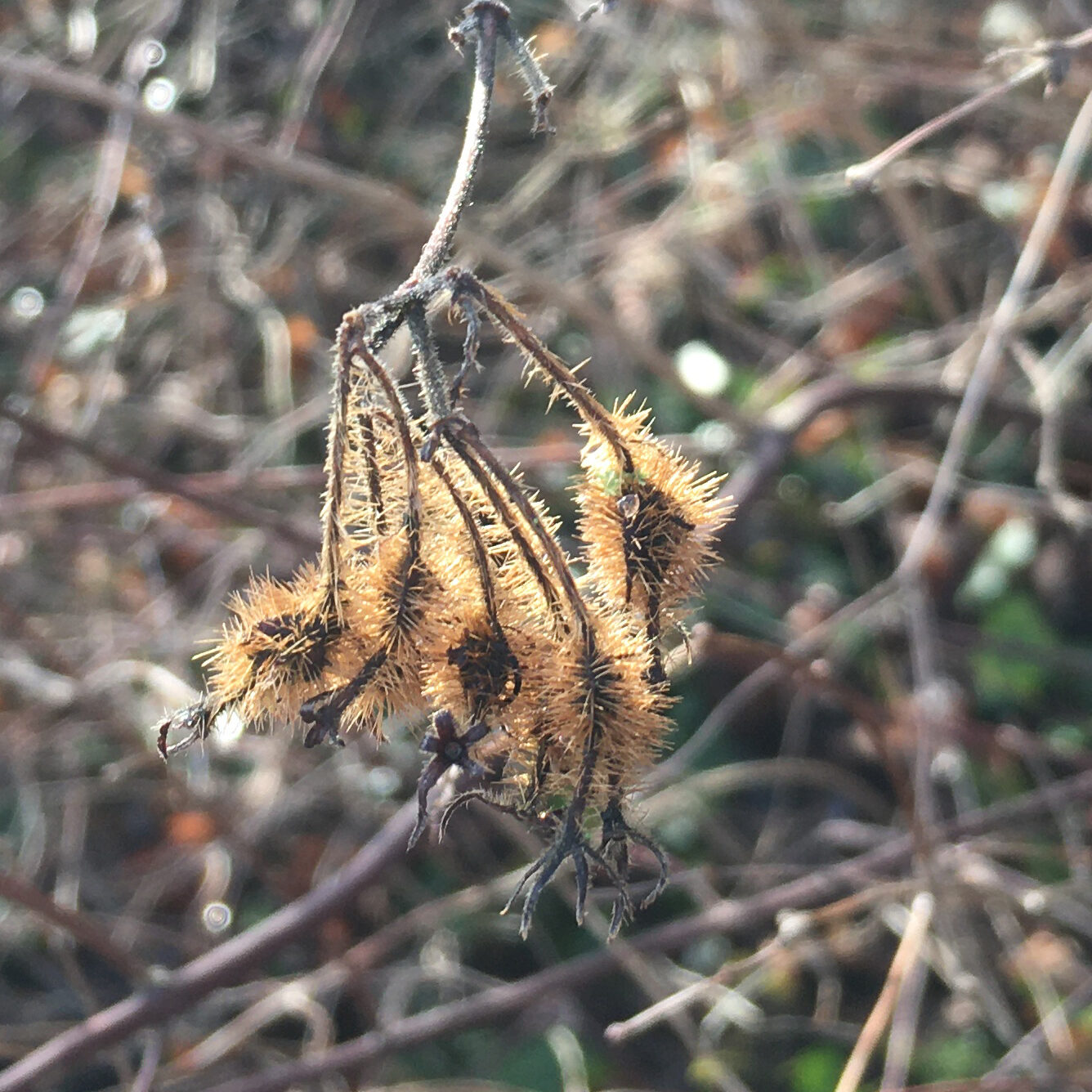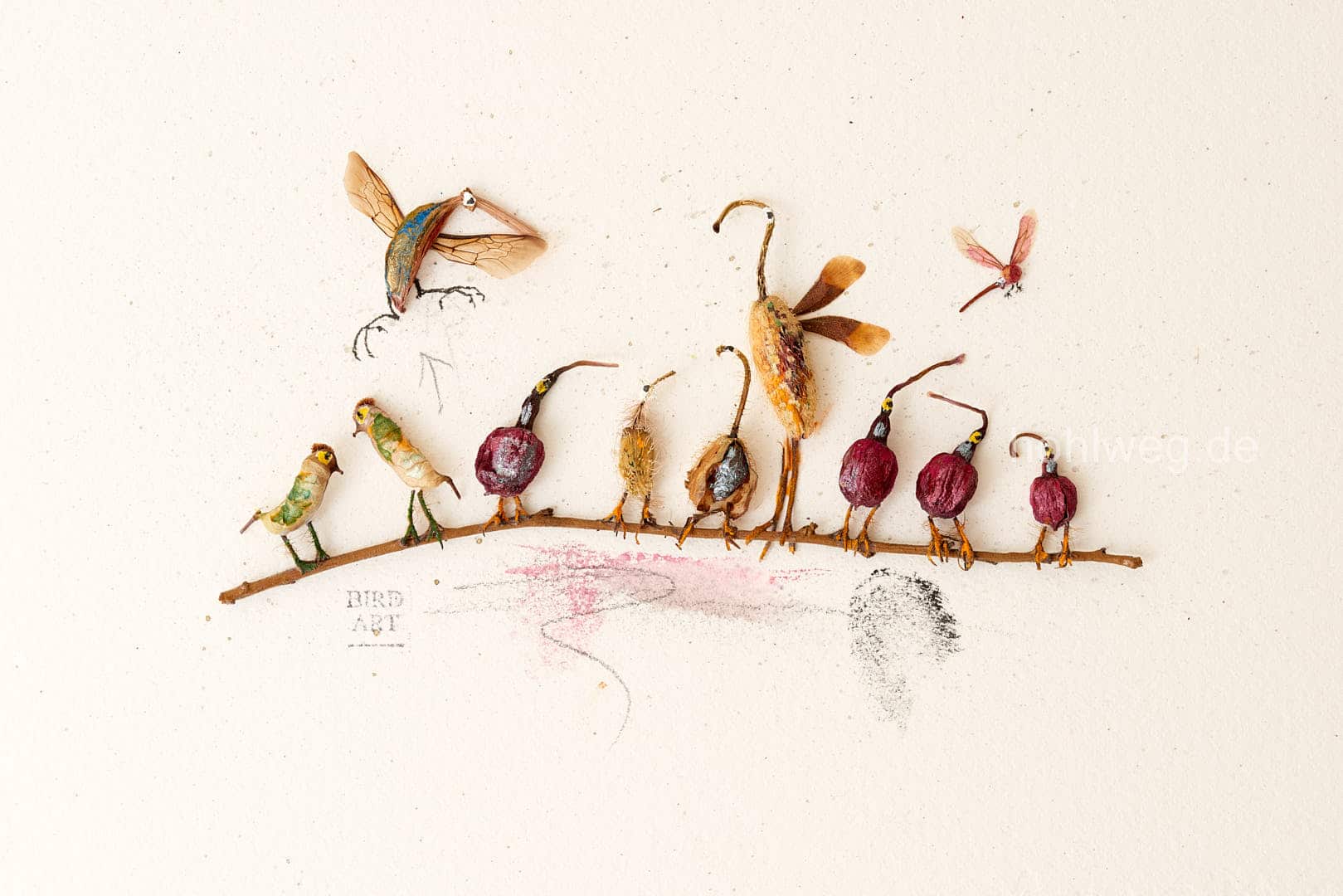It’s slowly getting a little tight
– The bird perch is just 11 cm long and about 2 mm thick. How many birds fit on such a tiny bird perch? I was able to fit nine extremely rare bird species next to each other. Two more are still trying to get a perch. I had to concentrate very hard not to blur anything in this buzzing scene. And coughing is not allowed in my work anyway. With the small elements, a breeze is enough to scatter everything.

Here you can zoom in on the individual figures even more clearly using the magnifying glass function. Let your imagination run wild when determining the individual species. My guess is poppy seedling – beeper and fuchsia – robin.
Fuchsias and poppies
I used fuchsia flowers and poppy seed pods for the bodies. These sizes are still relatively easy to handle. I can align everything exactly with a pair of tweezers. Two of the poppy capsules look quite hairy. It’s funny – it gives the two bird creatures a disheveled plumage. Just like in the bird world – the hairstyle isn’t always perfect there either.
I discovered and processed the tiny seed remnants for the bird’s feet for the first time last fall. In the meantime, a very kind visitor to my website has found the name of this plant for me via an app. Here it is: The legendary Kolkwitzie. If that’s not a funny name! The hairy seeds each have two outgrowths, which I process just as they are. Strange shape. Each individual seed actually looks like a plucked chicken in miniature – there’s that. You can clearly see the bird’s feet at the bottom of the seed stalk, can’t you?

Sits, wobbles and has air
I normally draw the legs for the miniatures with a fineliner. Creating the feet from found objects was a risk. After all, I have to hold my breath for a moment with the smallest fragments I use in order to place everything correctly. This time I only succeeded after several attempts. But lo and behold: it fits, wobbles – and every bird has air. And the “toes” actually look amazingly alive. The bird creatures cling to the pole as if they had always taken their place on the little branch.
Incidentally, this collage is also included in my postcard set
Now all that remains is to find the right frame. As a rule, I only use object frames so that the found objects are not crushed by the glass. I use low-reflection glass so that the intricate details really come into their own. This means that the fragile biotope is optimally protected for sustainable bird watching. As soon as I have the right frame, I’ll post an update here on the blog. Or get in touch and I’ll send you more views.

